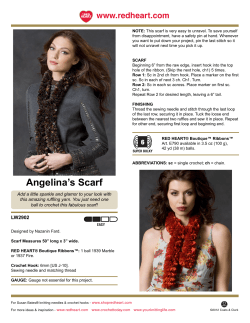
Bunion Treatment Recovery Times / Scarf/Akin Ostetomy
Scarf / Akin Osteotomy Recovery Times Unilateral Hospital Stay Rest & Elevation Suture Removal Crutches required Time off work – Seated – Standing 1 night 7 days 2 weeks 7 days Bunion Treatment Scarf/Akin Ostetomy 2–3 weeks 4–5 weeks Bilateral Before Hospital Stay Rest & Elevation Suture Removal Crutches required Time off work – Seated – Standing 2–3 nights 10 days 2 weeks 7 days 3–4 weeks 6–7 weeks General Foot swelling Shoes – Hospital – Wide – Normal – New Result times – Good – Better – Best 12 weeks 3–4 weeks 4–8 weeks 8–12 weeks >12 weeks 3 months 6 months 12 months For more infomation contact: After Mark C. Blackney Terence Chin MBBS BSc FRACS MBBS FRACS Orthopaedic Surgeon Orthopaedic Surgeon Phone (03) 9417 0762 Fax (03) 9417 0433 Phone (03) 9928 6450 Fax (03) 9417 0433 166 Gipps Street East Melbourne VIC 3002 www.theparkclinic.com.au Mark C. Blackney MBBS BSc FRACS Orthopaedic Surgeon Terence Chin MBBS FRACS Orthopaedic Surgeon Bunion Treatment Bunions are a common deformity in our community. They occur due to a muscle imbalance that is either inherited or caused by inappropriate footwear. Bunions worsen as we get older and can eventually cause pain and deformity. The bunion may damage other parts of your feet as well. Pain is felt because of their size and abnormal mechanics. The time to have treatment is when they cause significant pain or you have difficulty in finding comfortable footwear. Occasionally bunions are treated when they are not painful in themselves but are placing the rest of the foot at risk of major problems. Most have failed due to high recurrence rates, excessive joint stiffness or by transferring problems to other parts of the foot. The reason why we use the Scarf/Akin Osteotomy is it solves many of these problems. At our clinic we use a treatment known as the Scarf/Akin Osteotomy. This is one of the most advanced treatments available. This practice was one of the first in the country to use this treatment which in our opinion has revolutionised the management of this problem. We have used this treatment exclusively for the last 5 years and now have performed around 900 procedures. The procedure has 5 components performed through two incisions. Initially, one of the tight ligaments on the opposite side of the bunion is released. Then the bunion is shaved. Following this the metatarsal bone is cut and adjusted to narrow the foot and realign the joint. This is called a Scarf Osteotomy and a small screw is placed in the bone at this time to provide solid fixation. After this a fine wedge of bone is removed from the phalanx bone to straighten the toe. This is the Akin Osteotomy and a small staple is used to hold the bone in place. Finally the joint capsule is tightened where it had been stretched by the bunion and the skin is closed. The metalwork does not need to be removed. If you know someone that has had bunion surgery but not at this practice they may not have had the same treatment as we are recommending. This treatment is only available at a small number of centres. Please understand that many operations for bunions have been tried over the years with varying levels of success. The procedure has been popularised by Mr. Louis Barouk, a French foot specialist and this procedure is the most common bunion operation performed in that country. The keys to its success are that it is restores foot mechanics, allows excellent joint motion and has very low recurrence rates. Immediate weight bearing is possible and plaster is not required. Once the bandages are removed in 14 days and the wound healed you are free to move about as you wish. As with all foot surgery swelling occurs and this is the main limitation to activity and footwear in the early phases. Swelling increases over a 6 week period and then reduces over a further 6 weeks. As such your final result begins 3 months after surgery. As the mechanics in your foot have been substantially changed, your body will go on making subtle adjustments over a 12 month period. Perhaps just as significant as the procedure advancements is the improvements we have made in post operative pain relief. Foot surgery without appropriate pain relief is extremely uncomfortable. This practice was the first in Victoria to extensively use a sciatic nerve block for foot surgery. While the operation is performed under general anaesthetic a small injection is directed behind the knee toward the sciatic nerve. This puts the foot to sleep for around 12–18 hours meaning that you wake up from surgery without pain and generally don't get much pain at all when the block wears off. This has made a large difference in the overall surgical experience reducing anxiety and improving recovery.
© Copyright 2025





















